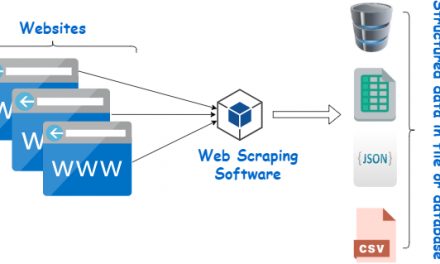Success is often not something we can measure or quantify, but the world of websites is a little bit different. There is no way to measure if a person is successful because there is a different definition or criteria per person, but websites use numbers rather than qualitative data points, and numbers paint a much more exact story than someone’s impression of a successful website. Measuring, evaluating, and auditing your website may feel unnecessary if everything is working reasonably well, but if you don’t stop and measure your current status, you will have nothing to measure future success or failures against. Taking an accurate reading of your current state not only gives you the data now so you can fix problems but also lets you collect a log of data to show how you improve or falter over time. A website audit is not a magical fix-all solution, but it gives you the information you need to work towards fixing the problems highlighted in the audit. Before you dismiss or start-up an audit, find out what an audit entails, how you will use the information, and your long-term goals.
Three Things To Start

Before you can reap any benefits from an audit, you must understand what an audit is, how it works, and how you can use it to better your business. Thankfully, collecting audit data is a mostly hands-off process. Web analytics tools, Google Analytics is likely the most well-known and free web analytics tool, will do most of the heavy lifting for you by collecting the large numerical datasets straight from your website. Web analytics tools will collect a range of different data points, including how many visitors have been to the site, information about the types of site visitors, how visitors interact with your site, tracked conversion rate, most visited pages and or items, and other custom collections you can set up.
Once you have scraped the numbers you need, it is time to compare the data with your expectations, hopes, and long-term goals. Look at the audit’s numbers compared to what you expected or wanted. Is there a specific demographic you sent direct response marketing, but they aren’t making the impression you hoped for? Are there surprises in your audience like a group of customers you didn’t expect to be there? Is your site navigation hampering customers? Now is the time to ask all the questions you can. If your audit shows that your site does not align with your target audience, use the data to adjust features to get closer to your target audience. This is also an opportunity to evaluate your long-term goals for the website. If things are moving in one direction instead of the intended destination, you can try to correct course or go with the new direction. No data can make these choices for you; you can only use the data to inform your decision. There is no shame in changing your goals, but make sure it is an informed choice rather than a knee-jerk reaction.
There is also a difference between changing your measurable goals, such as aiming for 5% growth over the next year and changing your idyllic goals. Your idyllic goals should stay true to your vision for the business, but measurable goals should be adjusted as data paints a clearer picture of your current status and predicted future.
Easy Website Upgrades

Retooling your website to fix the issues an audit discovers is a long process, and the work will never be done as technology continues advancing. However, that does not mean that it always requires long hours and months to upgrade your website. You can do some simple things to elevate your website even if it doesn’t fix the larger problems. Any upgrades are a good idea, especially the easy ones that take far less effort to implement. Some of these changes might seem small, but your customers will notice and appreciate the help.
With online shopping more popular than ever, it is surprising shipping tracking APIs is not an industry standard. These handy tools let customers easily track their orders as they move through the shipping process and give you an extra page to use company branding. Email alerts for shipping changes or delivery is another great service customers appreciate for the convenience.
Add your contact or support information to the button footer of each page or another universal space. Making customers click through menus to find the support phone number or email address is a pain when they are already having an issue. If your support lines are not 24 hours a day, you should also include business hours with the timezone. Don’t shy away from making it easy for customers to contact your business. Most businesses would instead handle customer complaint emails rather than try to rebuild a reputation after too many customers couldn’t get the help they needed.
It may be tempting to stuff your pages full of content, whether it is useful or not. Having a significant volume of blogs, posts, announcements, videos may look good on the surface, but useless content is nothing but filler you don’t need. Before you spam out content, make sure it offers something of value to someone. Go through old content and remove the things that are not worthy of the spotlight along with regular maintenance. Fix broken links, check cited statistics, edit so all content is up to date, use on-page SEO, and fill in content gaps with thoughtful pieces that provide a service.
Keeping a website up to date and running smoothly is not an easy task. Technology, customer expectations, and industry standards can change quickly, but you may never know how much your numbers were affected by changes in the world without an audit. A website audit is not a magic ball to show you all your issues, but it will highlight areas to fix and lead to essential questions that will help you make the best-informed changes. Adjust your questions and goals as you learn from the audit, then make a plan to enact changes that get you close to your desired result. In the short-term, add common features and tools to your site that customers will appreciate. Not every change must be massive to make a difference; try different things, and rerun an audit in a few months to see if any metrics are moving. Have patience; this is a slow but worthwhile process.





